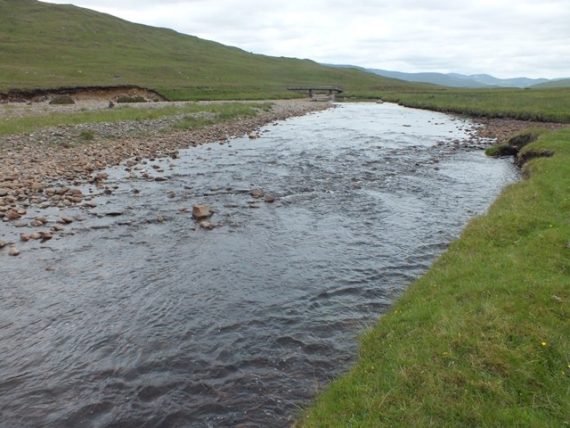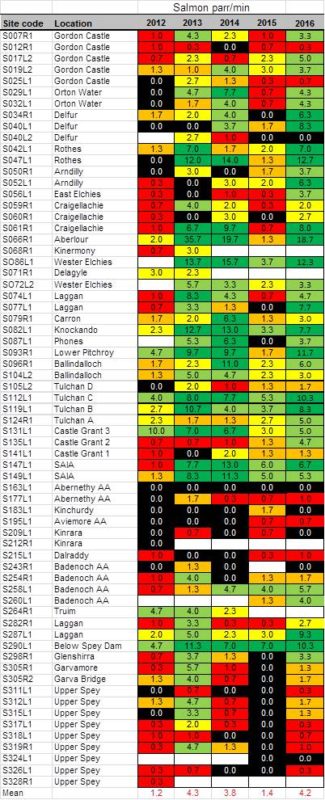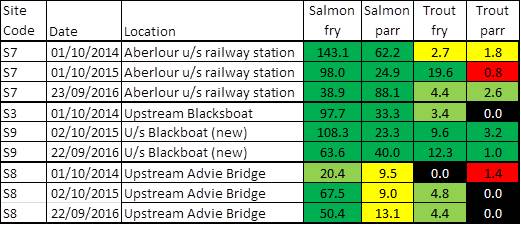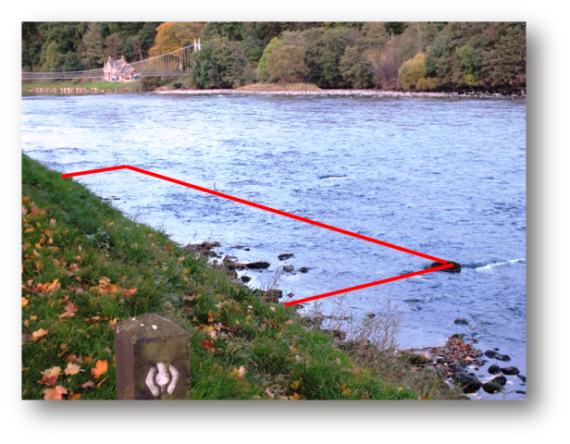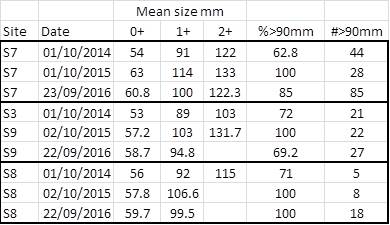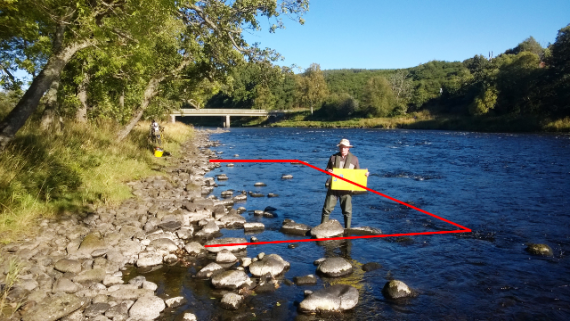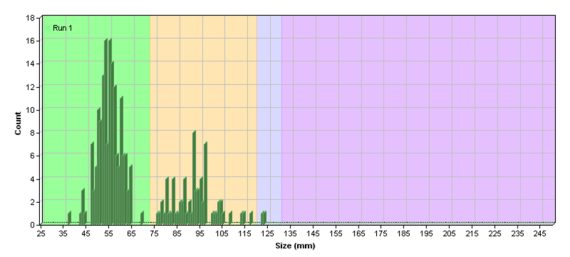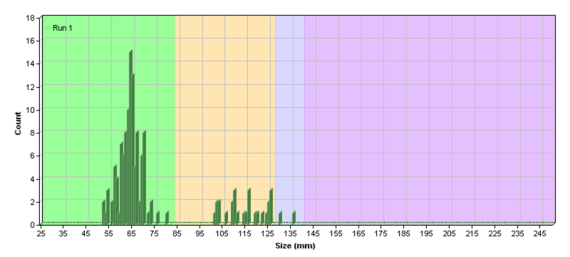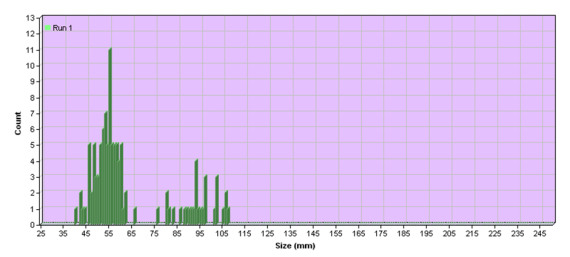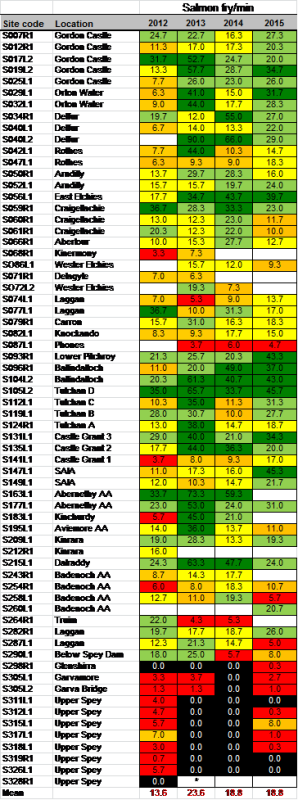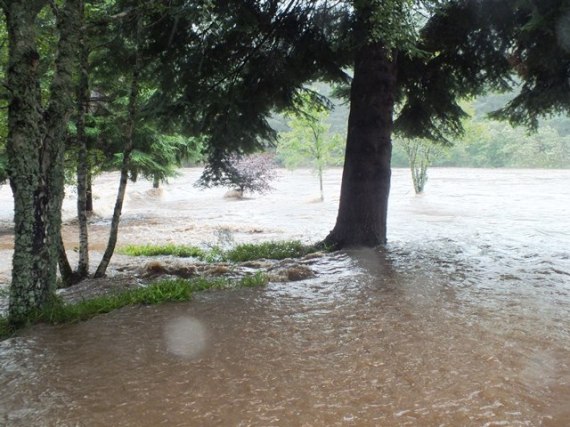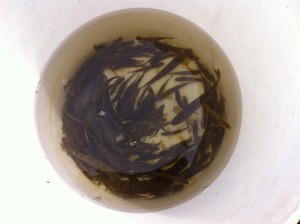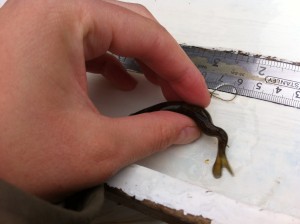After eight days of surveying we finished the Spey mainstem salmon fry index surveys today (below Spey dam at least). We usually leave the sites above Spey Dam for a couple more weeks so the results from there will follow in due course.
53 sites were surveyed although only 51 are reported below. The two other sites are an additional site introduced at Kinchurdy in 2015 and an alternative Aviemore site surveyed for the first time today. The results from the Aviemore site will be discussed below these sites are not presently part of our routine reporting network.
The Spey 2012 - 2016 salmon fry index survey classification scheme and the 2017 salmon fry counts are shown in the tables below.
Spey salmon fry index fry and parr classification scheme (based on 442 Spey surveys completed 2012 to 2016).
Of the 51 surveys only four were not in the good or excellent categories. The two sites in the low category were the perennial low fry count site at Phones and the site closest to Spey Dam.
The mean salmon fry count for sites downstream of Spey Dam in 2017 was 32.5/min, the highest mean count recorded during the six year monitoring period. This situation was not unexpected; there were good numbers of spawning fish in the mainstem last year and flows during the critical incubation period were benign. We have yet to do a mainstem survey, downstream of Spey Dam, where no salmon fry were found, but to find such consistently high numbers is unprecedented. The relatively high abundance of fry at present is readily observed by anyone who takes a few steps along the shallow margins. Fry are only the building blocks but our monitoring shows that high fry counts are usually followed by high parr counts in subsequent years; barring population limiting or regulating, events.
These surveys are primarily to assess the salmon fry population but we also catch parr. In 2016 the parr counts were published in the same format for the first time with similar colour coding based on 20% bands.
We start these surveys in the lower river, working upstream, and during the first day or two parr were notable by their relative absence. As we progressed upriver the parr counts improved with some sites producing their highest parr counts (Ballindalloch through Tulchan in particular). The mean parr count (downstream of Spey Dam) is just below average for the sequence, with the lower river counts probably reflecting the lower fry counts in that part of the river in 2016. The Phones sites may be a low fry count site but it is often above average for parr, as was the case in 2017. We noticed in 2015, another year with low parr counts in the lower river, the fry grew well, well enough that a proportion would reach the size threshold to become a one year old smolt. This is likely to happen again this year, although the future viability of young, and small, smolts is probably not as good as the normal older and larger type.
Most of the sites surveyed are considered to provide good or excellent habitat for fry, but not all. One example of a site where the habitat is categorised as parr in the Aviemore site S195L1. However, despite the poor habitat we still caught 53 salmon fry in three minutes today; even the poor areas of the Spey support decent numbers this year.
S195L1 survey site at Aviemore. The substrate is mainly sand/pebbles with the sampling done in little runs between weedy mounds. (Photo credit Sean Robertson)
There are few suitable run/riffle habitat sites in this part of the river but we did survey a new site today 1,500m further upstream. The habitat here was excellent resulting in a catch of 224 salmon fry, the highest count from any site this year. It is good to see that suitable habitat is being well used as fry produced in these small patches of good habitat will help populate the entire stretch with parr.
The new Aviemore site surveyed today. The substrate and fast, shallow, flows are ideal for salmon fry. The results from this site have been filed but are not presently used as part of the routine monitoring. (Photo credit Sean Robertson)
It was good to complete the mainstem surveys within a relatively short period during a period with consistent low water conditions. Our attentions will now turn to the Avon, and Livet, where we will repeat some of the surveys from last year to see if fry counts have recovered from the low values recorded in the wake of Storm Frank.
Incidentally volunteers are always welcome on these surveys. If you fancy a hard working day out in a beautiful part of the Spey catchment just get in touch.
The post Spey mainstem surveys update appeared first on Spey Fishery Board.
Spey Fishery Board


